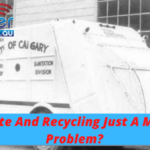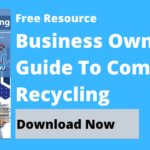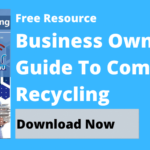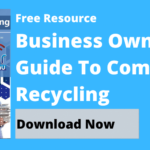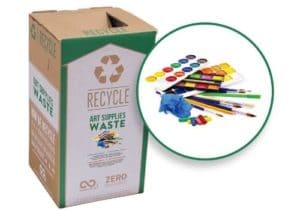Fatbergs Have Become A Recurring Problem In Australia 🛢️
Energy Disrupter
Fatberg Australia 🛢️: Hidden beneath our cities and lurking in the depths of our sewages lies a disgusting menace that’s both fascinating and repulsive – the fatberg. These monstrous conglomerations of grease, oil and other abominable waste are a growing concern for urban environments in Australia. In this blog, we’ll dive deep into the underground world of fatbergs, exploring their formation, the havoc they wreak in the different places of Australia and how we can prevent these modern-day sewage monsters from wreaking havoc on our cities with the help of Waster’s services.
Cafés and restaurants deal with a lot of factors during their operating hours on a daily basis, which include the leftover oil they use after cooking. Ideally, they have the means to dispose of their used cooking oil such as availing of Waster’s grease trap services. Never should they flush down the used oil down the kitchen sink as this causes tonnes of problems in our sewer systems.
The growing sewage waste problem
Those who do not really know might think “What is the problem with running it down the drain? It’s just liquid that will flow into the water anyway!” That, of course, is a wrong notion. Down the deep, dark sewers, the oils will rapidly cool down and solidify. So, this leaves us with solid oil, along with other combined nasty elements, that block our drains or pipes. The result? A repulsive, solidified conglomerations of waste down our sewers called fatbergs, that cause major blockages and headaches.
>Download Now: Free PDF Business Owners Guide To Grease Trap Cleaning Services
Fatbergs have become quite rampant in different parts of Australia, clogging wastewater systems. How can we deal with this?
Below, we will cover everything you should know about fatbergs, some information and news on how they cause problems to Australia and its waterways and how we can solve this problem.
More on fatbergs in Australia
Before anything else, let us properly define a fatberg.
Combining the words ‘fat’ and ‘iceberg’, the word fatberg is a congealed mass of fat, oil, grease and non-biodegradable solid items that can accumulate in sewer systems and wastewater pipes. They are typically found in urban areas where there is a high concentration of restaurants, households and commercial establishments that produce a significant amount of grease and solid waste.
Fatbergs are created when people pour cooking oils and fats down their sinks and toilets, which then solidify and combine with items like wet wipes, sanitary products and other debris that should not be flushed or washed down the drain. As a result, these accumulations grow to massive proportions, causing blockages and backups in sewage systems.
Fatbergs can clog sewage systems, leading to blockages, backups, and potential sewage overflows. These blockages not only cause flooding but also inflict damage to infrastructure and disrupt sewage treatment processes, posing environmental risks.
Here are some costly and headache-inducing problems that fatbergs give:
Most common problems
- Increased Maintenance Costs: The removal of fatbergs demands significant resources, including specialized equipment and labour. The associated costs are usually shouldered by municipalities and taxpayers, contributing to the financial burden of managing fatbergs.
- Environmental Impact: Fatbergs can trigger sewage overflows, releasing raw sewage into natural water bodies like rivers, streams, and oceans. This has adverse effects on aquatic ecosystems, contaminating water sources and jeopardizing public health.
- Health Risks: Fatbergs may harbour harmful bacteria and pathogens, posing health hazards if they come into contact with humans or animals. The presence of sewage in urban areas due to fatbergs can also facilitate the spread of diseases.
Australia is, unfortunately, no stranger to fatbergs. Various news across different Aussie places have surfaced that talk about the growing fatberg problem in their respective waterways. Let’s talk more about these pieces of news below.
Fatberg Australia: Sydney
Just this year, reports have mentioned the continuous nuances of fatbergs in Sydney and its suburbs.
7news reported that fatbergs continue to clog up Sydney’s sewers with 100 tonnes of waste extracted every day. Sydney Water mentioned in the news that more and more fatbergs are being pulled out of the pipes regularly to fix major blockages in the city’s sewers, resulting from a rise in non-flushable items being disposed of in the toilet.
“Fatbergs are like a perfect storm of wipes and oil and grease, cotton buds, hair (and) lots of products that should not be put down into the wastewater system,” Sydney Water’s head of Wastewater and Environment Iain Fairbairn told 7NEWS.
Sydney Water also mentioned that items that do not belong in the wastewater system can easily combine into an enormous mass over time that can block that sewer once it reaches a certain size.
Sydney Water removes about an average of 13 blockages daily, totalling nearly 100 blockages each week. These blockages not only create unsightly issues but also emit unpleasant odours in the affected areas.
Among Sydney’s suburbs, Castle Hill stands out as the one with the highest fatberg incidence, where Sydney Water had to address 71 blockages in the past year. Following closely are Blacktown with 63 blockages and Liverpool with 53.
Several other suburbs, including Baulkham Hills, Quakers Hill, Penrith, Double Bay, Merrylands, Bankstown and St Ives, are also contending with a notable number of these blockages. This situation underscores the pressing need for awareness and action to combat the fatberg problem in Sydney’s wastewater infrastructure.
Solutions to the fatberg problem in Australia
First off, we need public awareness about fatbergs. Fatbergs often result from improper disposal of fats, oils and non-biodegradable items by individuals and businesses. Raising public awareness about responsible disposal practices is vital in preventing fatberg formation.
In addition, upgrading sewage systems with advanced technology and infrastructure can prevent fatberg formation. Implementing larger sewer pipes and effective wastewater treatment processes can minimize blockages.
Our governments also play a big role in solving the fatberg problem in Australia. Governments and local authorities can introduce regulations and enforce strict penalties for improper disposal of fats and non-biodegradable waste. This can deter businesses and individuals from contributing to the problem.
Grease traps: the best solution for businesses
Grease traps are a wonderful solution for businesses such as cafés and restaurants wanting to avoid clogging problems and nasty fatbergs, properly manage their costs and help the environment. In Australia, Waster can help with that through its offered grease trap services!
Click here and check out our grease trap services.
Contact Waster right now for your waste and recycling needs now!
Does your Australian-based business need waste and recycling services? If so, then you have come to the right website!
Please call 1300 WASTER (1300 927 837). You can also email us at info@waster.com.au or enquiries@waster.com.au if you have further questions. Find the best deals in terms of waste and recycling pricing and services!





